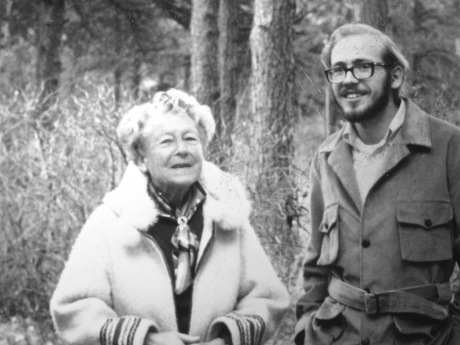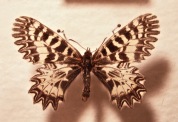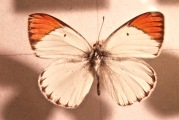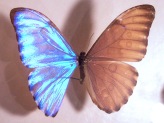Dedicated to the May family.
When I was eight years old, I suffered a short career in Cub Scouts, less than a year, weathering one bit of idiocy after another. The camping trip, washed out by a downpour, the picnic in the park spoiled by the nutcase who forgot to bring the drinks, the hike up the canyon ruined by falling on sharp rocks that cut my shins and made them bleed–everything conspired to destroy my faith in scouting.
The last straw, my final and most deflating experience with the organization, but also the most wondrous event in my life, was the field trip to the May Museum of Natural History. There, my patience stretched to—and beyond—the breaking point.
We rode in the McGarglemobile, named after the Den Mother, who always talked as if she were gargling, to Rock Creek, where we parked beneath a few pines near a babbling brook. The Cubs scrambled out of the huge Pontiac in our normal state of chaos, and scattered like marbles dumped onto a hardwood floor until Mrs. McGargle, with considerable guttural scolding and loose-phlegm hacking, reassembled us at the museum entrance. There, having counted heads, she gave a wave like that of a professional dog handler with a retriever and sent us running into the Museum with no propriety whatever, sticking our fingers in each other’s ears and making crude remarks at every turn.
That was the point at which my reality took a bizarre tangent to normal.
I woke up on another planet, a world in which the beetles and bees and butterflies had gone on steroids a few generations ago, and were spread out in symmetrical arrays in huge glass cases, the beetles so big that my hand couldn’t have held more than one of them, and the butterflies and moths spanning as wide as both my hands spread out. The colors were more pure than anything I’d ever seen—crystal blues and greens, fiery reds and oranges and yellows, and even some pastels in pink and purple and aqua. One butterfly species was a dazzling metallic silver, shining like a well-polished spoon in a new place setting. Stick insects stretched as long as my forearm, spiders that could spread across my whole face, arrays of beetles like jewelry. I was struck dumb. The world faded around me like a distant dream. Sounds faded into the hush of the jungle. I sneaked through the rain forest in a pith helmet and high English boots, waving my net across the passionflowers. Agrias butterflies shot through the canopy, and Morphos flashed their dazzling blues in the dappled sunlight.
Each case spread its wonders before me. There were several long aisles of displays, each more audacious than the last, and I stood spellbound in front of each one, reading the hand-lettered labels on the giant pins beneath these magnificent specimens: Borneo, New Guinea, Paraguay, Brazil, South Africa, New South Wales, Bolivia, Sumatra, Bohemia. I slipped quietly into a parallel universe. A profound sense of well-being and satisfaction overcame me, except that I could barely breathe with the intensity of the experience. I felt completely relaxed, yet my head was on fire. I could hear the jungle waterfalls and see the puddling assemblages of glittering butterflies on the wet sands. A giant beetle hung from a limb that arched over the rain forest trail.
Suddenly I felt a frantic tug on my shirt as one of my Cub Scout friends, now an immigrant from America, shouted in my ear.
“There you are! Geez, let’s go! It’s time to go! We’re all waiting!” And he dashed out, hollering, “I found him! He’s coming!”
But of course, I wasn’t coming. I couldn’t find my way out of the jungle. Whereupon Mrs. McGargle strode in, plucked me up by the waist, carried me lifelessly to the McGarglemobile, and slung me in the back seat.
“Dammit!” she gurgled, “Whatsa matter with you?”
That was the end of my life as a Cub Scout. I tearfully told mom that I had decided to resign.
“Resign?” she said. “Can you do that?”
“I can never go back to Cubs. I need to go back to the May Museum. Can I just please go back to the Museum? They made me leave before I saw it all.”
And to my amazement, my mom agreed. “How about Saturday we go down and you can spend as long as you want, and we’ll picnic and relax all day if we need to? Your dad needs a day off.” Mom’s smile was right out of Ozzie and Harriet, and I was the Beave. Or, well, whoever.
And so it was that I appeared at the Museum the next Saturday, prepared this time for the awe of it all, and spent many hours slowly shuffling sidestep from one case to the next, once around the whole place, and then around again, and then again. Few people were in the room, and they all came and went too quickly to see anything, I thought, and once an older gentleman walked through the Museum and unclipped a chain from a stairway in the back and walked slowly up the stairs. He came down again later, and then still later he reappeared and again went up the dark stairs in the back.
I stared after him, wondering if he might actually be the man, James F. May, who had made this collection, and whose picture was on the newspaper clippings in the entryway. I tried to imagine what was up those stairs. What did he do up there? Maybe he had microscopes, or maybe more cabinets of specimens that he was studying. I thought maybe he was going up to Heaven.
Mom, true to her word, relaxed for hours after she and dad had seen the exhibits, had a picnic on the stream side and just sat in the car, reading the newspaper, working the crossword, knitting, and waiting for me. I emerged into the afternoon light and told them I was finished for now, but could I come back the next weekend?
And Mom answered, as all good moms do in these circumstances. “We’ll see.” Which usually meant that somehow they’d find a way.
And so it was that I appeared at the Museum again the next Saturday. And again, the older man came through, and this time he stopped and looked at me for a moment, and then went on up to Heaven. And about an hour later he came down again, and he noticed that I was still there, and he approached me and introduced himself.
“I’m Mr. May,” he said, holding out his hand. Struck dumb, staring at his large hand and then up to his face, I came up blank. He smiled. “What is your name?”
“Sam,” I said. “I’m from Star Ranch.” I can’t imagine why I told him that. Maybe I didn’t want him to think I was from the tropics.
“Well, Sam from Star Ranch,” he said, “You seem to have found an interest here, would you say?”
And I said something like, “I don’t see how you ever got all these things.”
“I’ve traveled a lot,” he said, “but I’ve also traded many specimens. People will collect things for you if you offer them good material from North America.”
I had never imagined such a thing. He pointed out a few particular specimens that he prized very highly, and I finally mustered up the courage to ask him about the upstairs. He said that it was where he prepared specimens for display, and that he also had a large collection of North American “material” up there, meaning insects of all sorts, but mainly butterflies. He said that some day when I was a little older perhaps I could come up and see it.
And then he said he had work to do, but for me to enjoy my stay and to keep building my interest in entomology.
When I left that day, the lady at the front desk told me that Mr. May had told her that I would never need to pay an entrance fee from this time forward, for the rest of my life, that I just needed to call ahead and tell them I was coming. A boy with that much interest, he said, shouldn’t have to pay to learn his bugs. And so it was that I gained free admission to the greatest public display of tropical arthropods in the world, and a couple weekends later I met Mr. May’s wife, whom I called Mrs. May, but who always laughingly told me to call her Margôt. Her speech was formalized, with a lovely British accent, and with well-chosen words.

She always signed her cards, “Margôt.” Her mention of trading butterflies always made my brain light up, because her trades were so lopsided in my favor. I brought her a few tattered, common butterflies, and she gave me a few tropical beauties in exchange. Once she opened a large cigar box brimming with butterflies in envelopes, and took out several magnificent examples, commenting on each, and then folded them gently back into the box and handed me the whole box. “I thought you would like these,” she said, and then added, “Would you like a grapefruit?”
Mrs. May ran a world-class blacklight moth trap, designed and built by her son John, who, it turned out, was a huge figure in the building and maintenance of the Museum.
If I became a writer, I decided, I would write a book about John and his father, because to me they were the most magnificent people. But I became a biology teacher.
I don’t think Mrs. May really had much to do with the collection or the Museum, and that may be why—after her husband’s death—she was so generous with those boxes of butterflies. But I watched her bring in the moth catch sometimes from that big trap in the woods, and I still remember spotting a few moths that I’ve never seen before, or since, in Colorado. She collected a few species new to science.
I never missed the Cub Scouts. It wasn’t their fault, of course, or even Mrs. McGargle’s fault. She was, after all, trying hard to help tame a bunch of wild boys, and you know she never got paid for it. And, in spite of her incompetence, she took me to the May Museum, and I owe her for that. So whatever bad things I said about her and the Cub Scouts, I take it all back.




Wow! Sam! Fantastic writing! I could see the story happening! Beautiful tribute! If it brought tears to my eyes what is is going to do to the Mays? Beautiful!
LikeLiked by 1 person
What a lovely story. Thank you for sharing your memories of your museum visit.
LikeLike